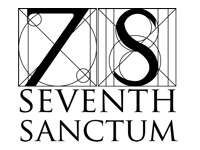Well been awhile, so here’s where we are!
Plot Twist Generator
After examining the options, I’m going to go straightforward randomization – putting together, iterating, and/or extending common elements. So you’ll have twists like “The villain is the protagonist’s mother” or “The villain is the protagonist’s mother, and has a deadly disease” and so on. I could try and provide various boundaries and options, but it’s just going to lower the level of detail and potential, so why not go a little broad?
Now I’ve got to start on it, but it feels comforting to have a focus.
Other Generators
I need to get to that one, but I’m kicking one around inspired by a particular TV show. Darn it.
Way With Worlds Book
Editing this now. It’s going pretty smoothly, but I need about 2-3 edit runs to make it ready for “real editing.” The book itself promises to be 450 or so pages long, so this is a lot of work, probably easily 3+ months before I get it into enough shape I want someone else to go over it. So I think it’s very likely we won’t see it until 2016.
However, I think the edit of the . . . uh . . . . rewrite . . . is going to make the book much better. I can tone up or streamline language, expand information, make things clearer, and make it flow better. The new chapter structure breaks the columns into logical subsections that really add consistency to the lessons.
Sailor Moon Book
On top of all of this, I am writing a book on Sailor Moon fandom with a co-author and friend. You can find more here at my personal blog. This one has no exact deadline, but it’s probably a year away from completion, more of a long-term project.
More Columns
Working to bring another column here to the Codex. Stay tuned . . .
Respectfully,
– Steven Savage
http://www.musehack.com/
http://www.informotron.com/
http://www.seventhsanctum.com/
Let’s see what I can cover this week!
Way With Worlds
OK, Way With Worlds is now all uploaded and included into a book format – which means sorting, then editing. It’s also looking to be enormous – try about 450 pages when done. That’s 120 pages more than any of my last books. It’s good it’s already basically done and in need of editing . . . but that’s a lot of work. So yeah, I don’t think we’ll see this one until 2016.
It’s going to be interesting to rewrite what is basically a rewrite, but I want to bring more coherence to the various essays, fill in gaps, and basically make it a manual for worldbuilding. So I guess it’ll be version 3.
Generators
I’m still kicking around how to do the plot twist generator – got a bit held up between work and having some dental work done, along with other chores. I just can’t find an “in” yet so if anyone has suggestions, please, contact me. Otherwise I may just take a stab at it and see how it goes – I just would hate to restart this thing after a lot of initial effort.
Thanks to Steven Universe, I’m also considering a “Gem” generator. Well a generator of “Gem-based alien techno-wizards” or something. You know, nothing truly openly tied to the show. But let’s just say it seems there’s a need among that growing fandom . . .
Other Writing
No idea yet what else I’ll write here, so it’ll be Ryan for awhile. I’m sure something else will get me fired up to write about creatively . . . . I just wish I knew what . . .
Respectfully,
– Steven Savage
http://www.musehack.com/
http://www.informotron.com/
http://www.seventhsanctum.com/
First of all there’s a chance to help with research on anime culture – take this poll!
The return of Otaku No Video! GO KICKSTART.
Respectfully,
– Steven Savage
http://www.musehack.com/
http://www.informotron.com/
http://www.seventhsanctum.com/
So, I sat down recently to plan my next Way With Worlds Column – and realized that I had no more to write. I had all the rewrites I wanted. I had added all the new content I was inspired to add. I had completed my goal.
That goal? Revisit what I’d written over 15 years previously to update it with all the things I learned since then. Mission accomplished – but now there’s more to do.
I’m now going to gather all these columns and do what I should have done all those years ago – edit them into a book. Once that’s done I’ll have the definitive word on my theory of world building for the next fifteen or so years. That’ll also give people something to have and read and keep – much as I found some people had printed out all my old columns.
While editing the columns into a book (and doubtless improving and updating them), I’ll probably be inspired to write other columns. You’ll see those pop up here and there as the mood strikes me – and they will be integrated right back into the book.
This is going to get the full book treatment – multiple edits, organizing the columns into appropriate categories, and so on. I will surely tweak, rewrite, and expand the work, integrating the feedback and insights I’ve had since I started this mad effort. When it’s done it’ll be worth your time.
How long will this take? Not sure because I want to have fun with it – and because I’ve got other projects going on. Right now I’d guess the release would be no earlier than late 2015, and no later than a year from now.
Will there be other non-WWW writing here from me? Probably. You know me, I can’t shut up . . .
. . . though I should also get to some more generators. That Plot Twist one is still hovering over me, and you folks keep sending ideas . . .
Respectfully,
– Steven Savage
http://www.musehack.com/
http://www.informotron.com/
http://www.seventhsanctum.com/
 Hey all, hope you’re doing good. So what’s up with the Sanctum?
Hey all, hope you’re doing good. So what’s up with the Sanctum?
Well first, you’ll notice the badge there in the sidebar – the Sanctum was declared one of the 101 most useful sites for writers by Writer’s Digest! Glad to know the site’s so helpful – and be sure to check out the other resources in the latest issue!
Next up, generators. Though I’ve got a few ideas (because they never stop) I want to take a hard look at the idea of a Plot Twist generator this summer. However my issue right now is what form it should take. Genre based? Abstract? Wild? Bounded? What kind of options? Or in short . . . suggestions welcome.
I may do a poll once I get some kind of idea in mind.
I got back from Fanime, which of course was awesome. I did some career speaking there and hope to do more events next year.
Way With Worlds will indeed be wrapping up soon – then I start editing it into a book. That probably means I’ll get a few more column ideas, but there probably won’t be anything regular.
I may start doing other creative posts here, let’s see where my mojo takes me . . .
http://www.fanime.com/

Because of this, Realism is both something to seek in our work. It’s also a sign of successfully making a good world and thus a good tale from it – because people live what we create. However when we ask what realism is in an attempt to achieve it, it becomes much more difficult.
It’s difficult because realism is a trickster.
When you step back from a fiction that seems “realistic,” it may suddenly seem rather unrealistic. Yes, you related to that hero fighting a dragon, felt the fire on your face and smelled the blood – but she was fighting a dragon which isn’t exactly a realistic beast. Yet there, in the experience of a good fantasy novel, it seemed real.
At the same time, just having “realistic” elements in a tale or a game doesn’t mean it seems real. A world of cars and computers and gritty real-life experiences can seem detached, empty. The elements are real but it doesn’t “feel” real.
Sometimes dragons are more believable than accountants. Realism is a trickster.
This is because, like any good trickster, realism has more than one face – two, as far as i’m concerned. Your world and the tales and games within it need to show both faces to be truly “real.”
The Face Within: Internal Realism
We can read the most outlandish science fiction or magic-drenched fantasy and be lost within it. We can follow things with little connection to our reality and live them. The unreal, the fantastic, the not-yet true can be very real in a good world and a good tale.
This is because a setting is believable if it has consistent rules and principles that are followed. It may be a realm of clockwork stars and sorcerous cats, but if people can recognize why and how, cause and effect they buy into it. We humans like rules, and when we can divine them in a work, then we can believe it.
Internal realism is this kind of realism -the realism of a setting that is consistent, if outlandish. It can be understood and comprehended and analyzed. Because there is “something” there, it can be believed. Because it can be believed, it seems real to people.
But Internal Realism has an equal partner.
The Face Without: External Realism
When wizard cats battle among clockwork stars, we may find ourselves cheering the heroine because we understand her motivations. When superheroes thunderously battle across dimensions, the blow-by-rib-cracking blow stories make us feel each unrealistic punch. When people who never existed come from cities we’ve heard of, we “get” them. When we read of the glint of sunlight on a sea that never was, we “see” it.
No matter how untrue or fantastical or made-up, a good world with good characters, a good tale, gives us ways to connect to the characters and setting. We can relate to characters, feel their pain, gasp in wonder at a description, or nod at a man who never was describing a good Philly cheesesteak.
This is the realism that we connect to – pain and emotion, location and cuisine, a visual description that is evocative. It is the realism that connects us to the fictional through experiences we can understand. Everything else may be unrealistic, but there are elements of “real” we connect to.
These places of connection could be real historical events, believable technology, relatable characters, and visceral experiences. They can be many things, but all good External Realisms bridge the gap between us and the fictional.
Someone may fight dragons, but we relate to his need to keep an armor budget.
Realism: The Two Sides Together
Both realisms are your goal as a worldbuilder and creator because they work together. Internal realism means your world is understandable and External Realism makes your world relatable. Both mean your audience connects to a setting and its characters – even if that setting is strange and alien.
If you lack Internal Realism, your world is ruleless, hard to relate to, the realistic parts floating in a sea of incomprehensibility.
If you lack External Realism, your world is one people can’t connect to. The characters aren’t relatable, the experiences lack visceral elements, the setting seems lifeless.
Together? Together you can have the most fantastical world that people can connect to. They might not consciously realize just how deep they are in a setting that is totally “unreal” because it’s so real.
Again, realism is a trickster.
Getting Both Sides Of Realism
How does one develop both kinds of realism? I’ve found these things help:
- Good world design. In short, don’t skimp on building your detailed setting. Throw yourself into it and get all those fine details. That’s good for Internal Realism.
- Worlds that work. Put your worlds to work and create with them. Can you write multiple tales n them. Can you write up a description of, say, the magic in a way that explains things understandably. Can you translate characters to RPG rules effectively? Play with your world in different forms to et a feel for it and see if you can relate to it in different ways. When you can, it shows there’s a real “there” here. Good for Internal Realism.
- Empathy for the characters. Learn to step into character’s shoes so you understand them. Understanding them as you build them and write them better – and this mean sin turn people can “get” them. Good for External Realism.
- Ask questions. Asking questions of why and how helps you flesh out a world – and you’ll often be thinking like a reader or player. Good for Internal Realism and External Realism.
- Empathy for the reader/player. Whoever peruses your media you also want to think of them. Is what you write readable and relatable, do your descriptions evoke and inspire. Thinking of how they connect to your work and you world helps you create better -and maybe find some flaws in your work. Good for Internal Realism and External Realism.
A Worthy Quest
Developing both sides of Realism is a worthy quest indeed. It means you’ll create worlds people truly connect with -and works people truly connect with. These are powerful, affecting, and memorable.
In other words, very real.
Respectfully,
– Steven Savage
http://www.musehack.com/
http://www.informotron.com/
http://www.seventhsanctum.com/

I’ve spent plenty of time here talking about how to avoid over-communicating your world. There’s a good reason for this, which any gamer or reader or viewer knows – a giant infodump is distracting and reminds one they’re experiencing fiction. You can build a great world, but when you step out from behind the curtain to overexplain it, people become disengaged.
If you’re a person who peruses media, then you’ve also experienced the reverse of the infodump; people who don’t describe their world enough. As distracting as infodumps are, at least something is there to grasp, even if there’s so much you can’t get your hands around it. When there’s not enough information on what’s going on in the world, readers or players are just lost.
You can drown in too much information, or have such a drought of knowledge your interest withers and dies.
As of this writing, I feel like I’ve seen less well-explained worldbuilding in media over the years. Less attempts to bring me into the world, less attempts to connect or engage. I start craving a good infodump because at least I know something is there before I get overwhelmed and my eyes glaze over.
Why? Well let’s explore the reasons people might not explain their world enough.
Here’s what I’ve found. (more…)
Well it’s finished, the Magic Power Generator! I got inspired my the more “yell and use” magic of anime and video games, and this is an idea I’ve kicked around since the Magic Guild Generator and analyzed some of the Fairy Tail universe.
Beyond making appropriately magical-sounding powers, I also got to try out some new ways to organize data so it makes alliterated, artistic-sounding powers – like ‘Negative Nightmare Negation Necromancy’ or ‘Raiser Runecraft.’ It was pretty educational, and I figured out a few techniques to organize and sort data more efficiently and in ways to let me get it more poetic. I’m sure those lessons will be used in the future.
Here’s some regular ones:
- Ifrit Trance
- Gas Negation Invocation
- Forgotten Diamond Benediction
- Legendary Wind Magic
- Telekinesis Liberator Jinx
- Secret Yeti Jailer Magic
- Litch Spiritualism
- Hydra Executioner Magic
- Inescapable Undead Glamour
- Evil Wind Potions
And some ‘artistic’ ones:
- Earthquake Exorcism
- Obliteration Occultism
- Earth Executioner Exorcism
- Nightmare Negator Necromancy
- Hurricane Hermeticism
- Assistance Abjuration
- Ancestral Acid Alteration
- Purple Poltergeist Prayer
- Negative Nereid Necromancy
- Press Prayer
Beyond that writing Way With Worlds as I count down to finishing what I wanted to cover – and debating what else to write here when that’s done. If there’s anything you’d like to see me cover, let me know – I love to write so am always open to hear what directions help people!
Finally my friend Ewen has created this book of random tables that I’m sure any Sanctumite will want to see. And, yes, he’s encouraging me to do my own . . .
Oh and yes, considering the Plot Twist generator now. Might be fun to do over the summer . . .
Respectfully,
– Steven Savage
http://www.musehack.com/
http://www.informotron.com/
http://www.seventhsanctum.com/

After covering ways to tell people about your world without . . . well, telling people directly about your world with infodumps . .. . I wanted to focus on a few of my favorite ways to communicate about your worlds.
It is of course important to communicate your world to people. You don’t want to spray information around like a firehose of worldbuilding, but also you can easily leave people in the dark about how your setting functions.
Various books and films over time made me realize how the struggle not to drown our readers in information can also turn into the reverse – we don’t explain everything. We don’t want to infodump so we don’t think about how we have to inform our readers or players. We think readers or players “get” our world somehow.
But without some guidance, the reader or player or whatever eventually wonders “what the hell is going on?” Now if they signed on to be confused, fine, but in most cases you’re going to have to let them in on how your world functions somehow.
Just . . . without letting on you’re explaining things. Let’s face it, story flow aside, sometimes you have to figure out how to let people in on what’s going on and how the world looks.
Fortunately, there’s several ways you can do it.
Look For – Or Create Ways – To Do It
There are certain moments that give us a chance to let people in on how the world works. Its’ not an infodump or an instruction manual, but just those moments where a reader or a player can suddenly go “aha,” that’s how it works. They might not even realize they learned something, but they know in one way or another.
The moment someone has to fix a broken device tells people how it works.
The moment someone gets married tells you about traditions.
A character’s perspective lets them understand something through their eyes – in an empathetic way.
There’s all these little moments that we can let people in on our world.
What I recommend doing is as a worldbuilder, when creating your book or game or film, look for these moments. These moments give you an opportunity to gauge how much your audience should know – and see where you can tell them.
I find that finding these moments, as you mature as a worldbuilder and creator, becomes more and more instinctive. You develop a sense of intimacy with both your work and your reader and can “hook them up” so the people perusing your work can “get” the world.
In turn, as you do this you can create them as well, without forcing them.
Let’s take a look at the ways to tell people about your world.
Solution #1: Narrative Moments
I look for what I call “narrative moments.” These are the little moments that let people in on what’s going on. It can be as mysterious as an oddly colored sunset hinting at pollution or as obvious as a newscast that tells what’s going on. These are the moments where your reader or player (hopefully subtly) gets an idea of “whats’ up”
These moments may not necessarily have to be in the story, but can be crafted if you have to leave a few clues. These are little extras, easter eggs hidden in plain site, to help the audience out when needed.
Good narrative moments are everywhere, really. I find that as you improve you need to create them less- and notice them more.
Solution #2: Narrative Characters
For worldbuilders, it’s a great blessing to discover your cast has what I call a Narrative Character or characters.
A Narrative Character is a character whose experiences can help the reader better understand the world. It may be someone new to a setting who learns (and thus readers learn with them) or someone knowledgeable who explains things to others (and in turn, instructs the reader). In their dialogue and communication, even internal dialogue, the reader can learn about the world as that learning is part of the story.
It doesn’t have to be an explanation – their feelings, emotions, reactions, and so on can tell a great deal about a story. The thrill of having what seems to be a boring meal lets your audience grasp the level of a food crisis. Scars from a disease tell your audience just how awful that plague is. An incoherent angry rant can reveal all sorts of thing – as can a cool, internal monologue.
If a character has many of these, then you have a good narrative character.
Narrative characters can easily be overdone or done wrong; they can become tour guides, mary sues/gary stus, or dull hangers-on there merely to tell the story. Narrative characters should be characters. Wether you find a good narrative character or create one, make sure they’re characters first.
Needless to say, I like to find a pre-existing character and use their experience to illustrate important points.
Of course if you have a first-person narrative, then you already have a potential narrative character. Otherwise I like to keep an idea of who can be a narrative character and switch perspectives now and then.
Solution #3: Visceral Elements
One of the best ways to communicate how things work in your world is to ensure that you write elements that are very visceral in the proper levels of details and address them properly. People get stuff “from the gut,” common and human (or human-like happenings) like:
- Birth
- Death
- Eating
- Love and Marriage
- Sleep
- Travel
- Work/Leisure
Now these elements are likely to pop up in your stories. These elements are also likely to be illustrative of how your world works and how your characters and your culture work. Showing a complicated marital ritual (or even a memory of how one went) can show a culture is highly organized. Characters playing a popular game tells people the game is popular.
If you’re careful, tiny sentences, little moments, and many things that just happen to be in your stories can communicate the world to your readers. This is probably the most invisible way of doing things – and the way least likely to make the reader feel lectured too.
It also works well with nonverbal or limited verbal/explanatory descriptions.
Closing
I hope these methods help you out – they’re ones that have helped me. Just be aware of them, create them if you must, and hone your abilities so they flow naturally in your works. Done right, your audience knows enough and doesn’t know they know.
Which is just where you want them, totally adsorbed in your world without knowing how you helped them.
Respectfully,
– Steven Savage
http://www.musehack.com/
http://www.informotron.com/
http://www.seventhsanctum.com/
Hello everyone, hope you’re doing well. So here’s what’s going on!
The Magical Power Generator. The basic data is organized and sorted – and this took a little extra time because I am including options to create artistic alliteration (like a magical power called “Baleful Banshee Bewitchment.”). Next is to get the data into one of my data sets and break out the forms it can appear in. No proposed timeline.
The generator is simple, but fun because I’m working on researching words and ways to get things to sound interesting – which makes you ask questions about what words “sound” right together. It’s not always about simple data patterns.
Anyway, you’ll see the results . . .
Way With Worlds. As I’ve been getting feedback and getting new ideas, obviously this has gone beyond “just rewrite.” Still I think it’ll probably end this summer. At that point there’s one more big rewrite which I’m going to do before it’s in book form – I want to incorporate everything I learned while writing it.
Other Writing. Look to see a new column here in May or June. A friend will be running an exceptional column about media here – not providing much detail for now because we’re working plans out. If you’re interested in doing anything here, let me know!
An App? I’ve had a lot of people ask if I plan to or could do a Seventh Sanctum App. That’s been on the list to look at, but not high priority. However, if anyone has an experience converting PHP to Android and iOS let me know your experience.
So how are you doing out there?
Respectfully,
– Steven Savage
http://www.musehack.com/
http://www.informotron.com/
http://www.seventhsanctum.com/




